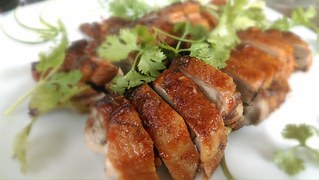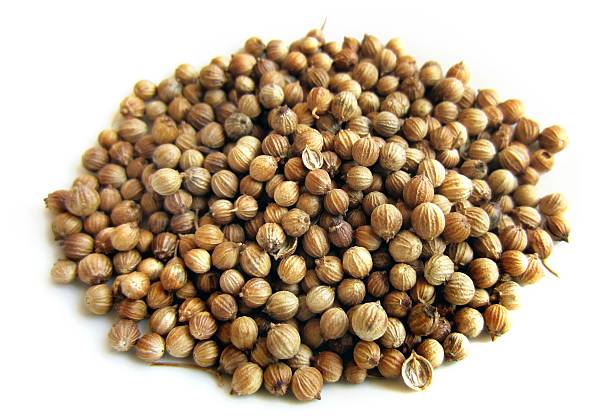
Reference: 20807504


The taste of coriander is very mild and fresh, bringing an exotic and refreshing aroma to dishes.
It is a traditional ingredient in North African and Asian cuisines, marinades, fish broths, as well as salads, olives, and pickles.
 Delivery
Delivery
Mondial Relay
 Returns
Returns
See conditions
 Payments
Payments
100% secure
Delivered in a resealable bag
 The taste of the seeds (or more accurately, the fruits) is fresh, mild, and slightly minty. These seeds can be used whole or ground into a powder. Their flavor is somewhat different from that of the leaves.
The taste of the seeds (or more accurately, the fruits) is fresh, mild, and slightly minty. These seeds can be used whole or ground into a powder. Their flavor is somewhat different from that of the leaves.
They are used in pickles, liqueurs, marinades, fish broths, sauerkraut, and also in olives. In couscous blends, tagines, curries, and Asian five-spice, they are typically ground into a powder beforehand.
Even the roots can be used, chopped, in Thai dishes!

Origin: Morocco
Scientific name: Coriandrum sativum
Other names: Arab parsley, Chinese parsley ("parsley" due to the shape of its leaves resembling parsley, and "Arab" or "Chinese" because people from these parts of the world traditionally consume it extensively)
These seeds are also used as an infusion for their digestive properties. They are often combined with other digestion-friendly plants such as dill, fennel, green anise, caraway, and star anise.

The plant also yields an essential oil used in aromatherapy, perfumery, and cosmetics.
Coriander is an annual herbaceous plant of the Apiaceae (Umbelliferae) family. It grows to a height of 30 to 60 cm. The foliage and stems are light green, and the flowers, arranged in typical umbels of this plant family, are white or very pale pinkish-purple. The lower leaves begin to wilt before the fruits reach maturity. Green when fresh, the seeds turn beige as they mature and dry. They then measure a few millimeters in diameter and have a somewhat hollow texture. The plant's aroma, though delightful, is sometimes described by those who dislike it as resembling the smell of a crushed stink bug! Coriander leaves no middle ground: you either love it or hate it!
This aromatic plant is cultivated in temperate zones worldwide up to 2200 meters in altitude and is used in numerous dishes in Asia, North Africa, and Latin America.
°°°
The name "coriander," which appeared in the 12th century, comes from the Latin "coriandrum." The origin of coriander is uncertain. It grows wild over a vast area of the Middle East and Southern Europe.
A few seeds (or fruits) were found in a Neolithic cave in Israel, making it the oldest archaeological trace of coriander, dating back about 6,000 years BC. Seeds have also been found in Tutankhamun's tomb and other Egyptian burial sites. Since the plant does not grow wild in Egypt, it is believed to have been cultivated there at the time. It was also cultivated in ancient Greece at least 2,000 years BC.
Arabic: Kosbor English and German: Coriander
***
Data sheet
 Anne Marie P.
Anne Marie P.
Bien

 Anne Marie P.
Anne Marie P.
Bien

Reference: 20721302
Reference: 20820902
Reference: 11N7892701
Reference: 11N7754201
Reference: 00033669-0001
Reference: 9N76632004
Brand: Epiciane
Reference: 12N7949601
Reference: 124510
Reference: 20711101
Reference: 10M6741201
Reference: 20701706
Reference: 2N7072401
Reference: grainesaroussir
Reference: fenouilE
Reference: celerigraines
Reference: 20703402

The taste of coriander is very mild and fresh, bringing an exotic and refreshing aroma to dishes.
It is a traditional ingredient in North African and Asian cuisines, marinades, fish broths, as well as salads, olives, and pickles.